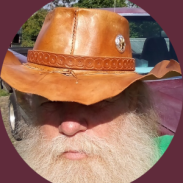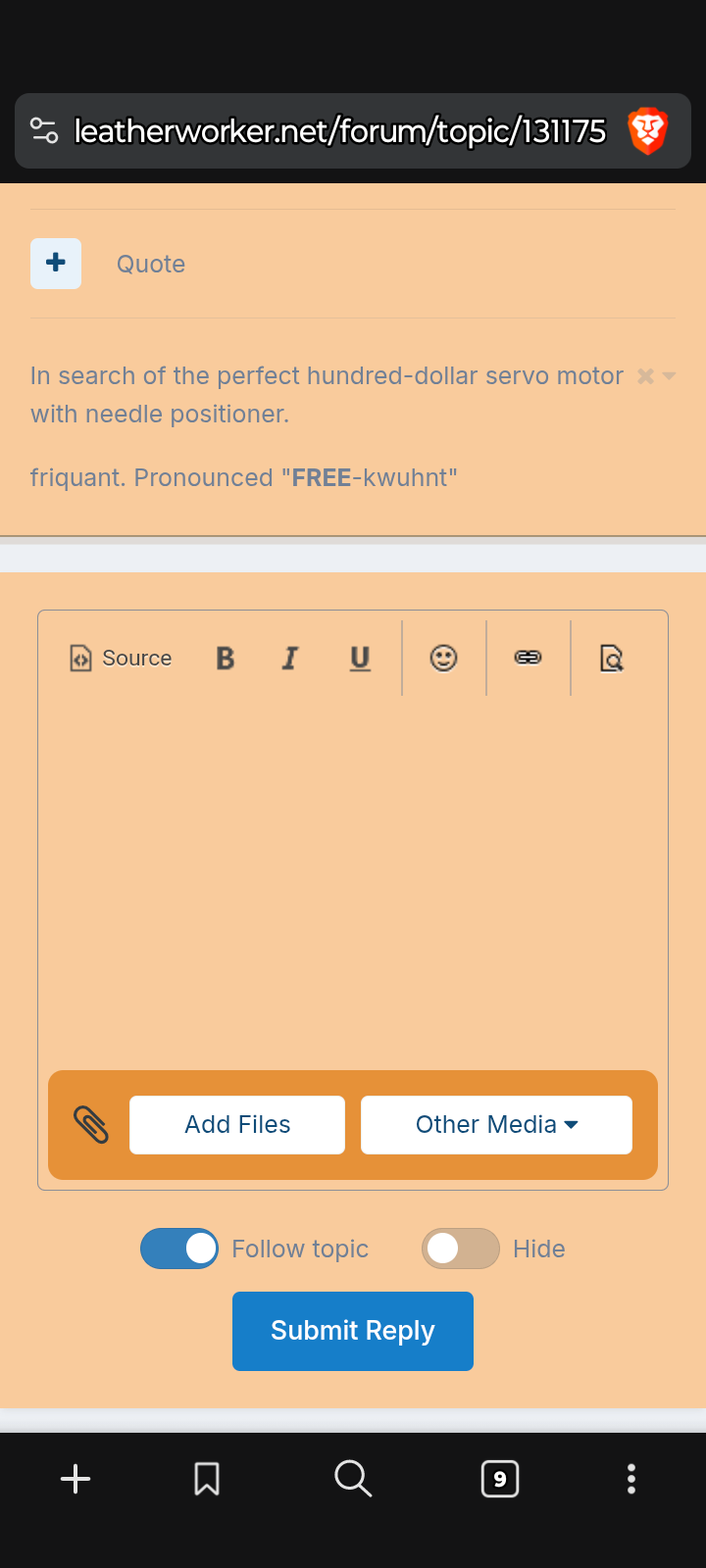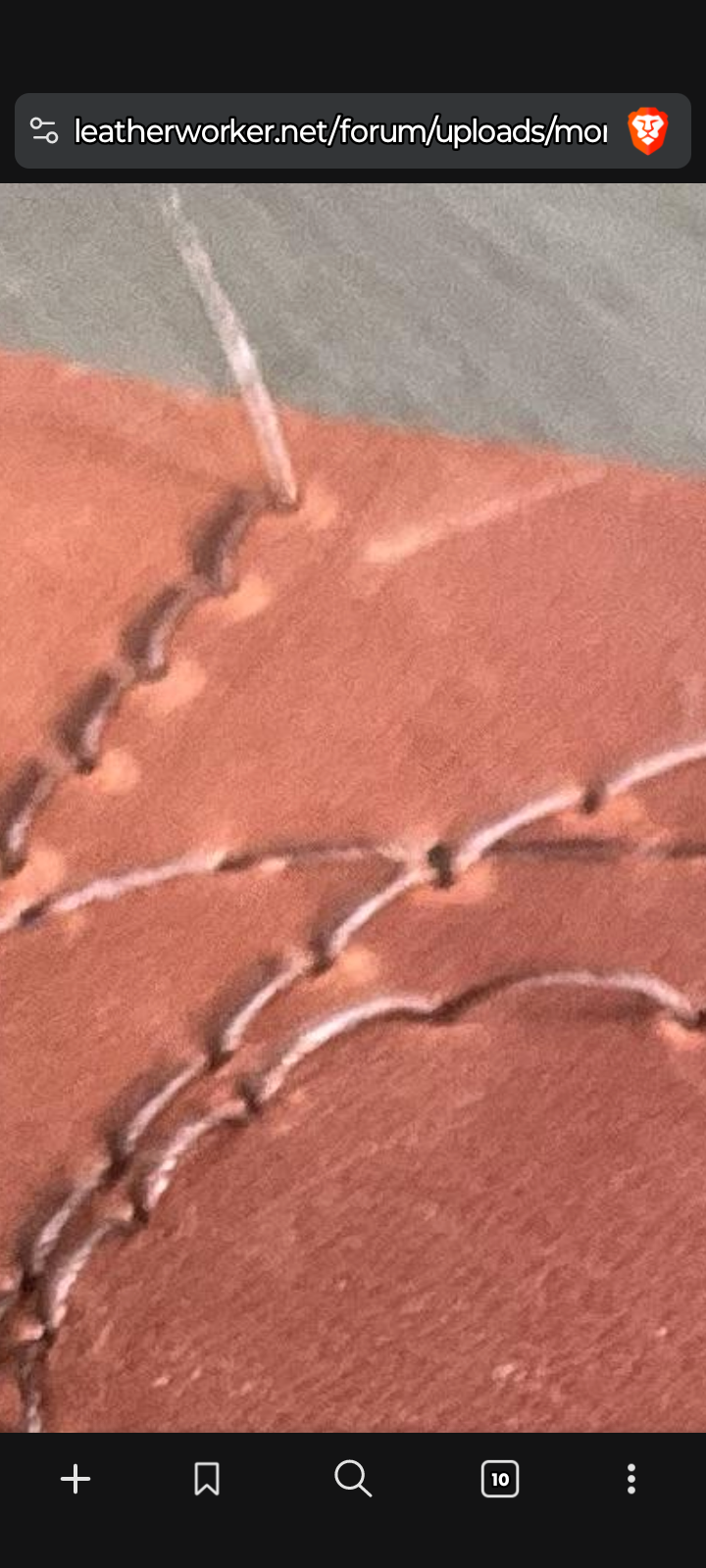-
Posts
1,383 -
Joined
-
Last visited
Content Type
Profiles
Forums
Events
Blogs
Gallery
Everything posted by AlZilla
-
i used it today with the current 65mm motor pulley and it hand wheels just fine. If it's any different with the 30MM pulley, I'll report back.
-
I ordered the same one you did. I couldn't find one for a 3L belt. If it's a problem, I'll just throw a round leather belt on it. I ran that machine for several months on one.. They work fine. I think the narrow pulleys are intended for those round rubber belts you melt together. PU, maybe? There are also narrower V belts. I'll make it work.
-
I've wondered how much torque increase we get from speed reducers. Is it inverse to the speed reduction? Turns out it is. If your speed reducer provides 1:3 speed reduction, you're getting a 3:1 torque increase. (The following assumes a start up speed of 100 rpm at the motor) But, even though you can put a 30MM (basically 1.18 inch) pulley on your motor against a 3" hand wheel and end up with a final decrease of 1:2.5 (39 rpm) and corresponding torque increase, you're still better off throwing a 1:3 speed reducer in the middle. Adding the typical 2"/6" speed reducer to the above gives you a speed reduction and torque increase factor of a whopping 7.58. Most of what I've read indicates that servos want to run at or above 300 rpm for cooling. The setup imagined above with the speed reducer would be around 40 stitches per minute at a 300 rpm motor speed. (it's not only imagined, it's bolted onto my 111W153, patiently awaiting the 30MM pulley) duck.ai provided confirmation about the torque increase. Now properly credited, here's what it had to say: Understanding Torque and Speed in Pulley Systems Torque and Speed Relationship In a pulley reduction system, torque and speed have an inverse relationship. When the speed of the driven pulley decreases, the torque increases. This is due to the mechanical advantage provided by the pulley system. How It Works Larger Driven Pulley: If the driven pulley is larger than the driver pulley, it will turn more slowly. This results in increased torque at the output. Smaller Driven Pulley: Conversely, if the driven pulley is smaller, it will turn faster but produce less torque. Calculation of Torque The torque available at the driven pulley can be calculated using the following principles: Torque Multiplication: The torque at the driven pulley is multiplied by the ratio of the diameters of the pulleys. For example, if the driven pulley is twice the diameter of the driver pulley, the torque is effectively doubled, while the speed is halved. Practical Implications This principle is commonly used in various applications, such as: Automobiles: In low gear, the engine speed is high, but the wheels turn slowly, providing more torque for acceleration. Conveyor Systems: Slower speeds can help manage heavy loads without slipping. In summary, in a pulley reduction system, as speed decreases, torque increases, allowing for greater force to be applied at lower speeds. Sciencing aimsindustrial.com.au So, until someone comes up with a servo offering 7X more torque than current offerings and running at a minimum 50 to 100 rpm, torque increasing speed reducers are king.
-
I have no idea what the market is for saddle bags but pricing is a constant problem for the hobbyist turning pro. Price them to pay yourself a fair wage, make a profit on materials, cover your overhead and turn a profit for the business. I'm definitely interested in how this goes for you.
-

Markdown or other programmatic entry
AlZilla replied to friquant's topic in Feedback and Suggestions
Remember the excesses of the 90's when the kiddies discovered all the things they could do could inflict on us with HTML? Don't do that ... -

New Tool Idea - Large Leather Shears - Should I make these for sale?
AlZilla replied to Stagesmith's topic in Leather Tools
I did wonder .... -
Pfaff says 134-35 needle system: https://www.pfaff-industrial.com/en/portfolio/sewing-machines/flat-bed-heavy-duty/pfaff1245 You'll then need to select a size to match your thread: https://tolindsewmach.com/thread-chart.html And then research the many different points available to decide what kind of look you want your stitches to have (scroll down about half way): https://www.techsew.com/us/blog/needle-buying-guide.html
-

Markdown or other programmatic entry
AlZilla replied to friquant's topic in Feedback and Suggestions
Just what you'd expect, a paragraph with the heading tags I copied and another paragraph of me blathering about the tags. It might have to do with post count. Maybe the software doesn't let s user enter raw HTML until a certain threshold. I wonder if @Johanna knows off the top of her head? EDIT:I went through and deleted most of that back and forth, it was just clutter. I left enough that Johanna can see what we're talking about. It's ok here in Feedback and Suggestions. -

Markdown or other programmatic entry
AlZilla replied to friquant's topic in Feedback and Suggestions
Maybe there's a setting deep in your settings to choose a different editor. I'm out of ideas ... -

New Tool Idea - Large Leather Shears - Should I make these for sale?
AlZilla replied to Stagesmith's topic in Leather Tools
When I looked earlier, Home Depot listed w22w wiss for around $32. I note that the extra w may be a typo or some cheaper version for Homedepot. -

Markdown or other programmatic entry
AlZilla replied to friquant's topic in Feedback and Suggestions
Top left corner in the box you're typing your reply into. I assumed you were typing up your reply in notepad or something and inserting your tags for bold, italics, header, etc and wanted to paste raw HTML. -

New Tool Idea - Large Leather Shears - Should I make these for sale?
AlZilla replied to Stagesmith's topic in Leather Tools
Given the number of places that sell Wiss 22W scissors, I'd say there's definitely a market. I can get them to my door for $32 to $60. The question is whether you want to play in that market or can you build a better mouse trap and get a premium price for it. You've piqued my interest. But remember, you're dealing with a crowd for whom the hundred dollar servo motor seems to be the holy grail. Price will definitely be a factor. -

Markdown or other programmatic entry
AlZilla replied to friquant's topic in Feedback and Suggestions
Top left corner, click "Source" and paste away. I think that's what your asking for. Wouldn't your BOLD tags be in whatever you typed up? -
This shows the difference in stitch length. But, style points for hitting that stitch hole in the middle twice!
-
I don't know if I'm seeing it right or if it's some kind of optical delusion, but the stitches on the bottoms of your circles look much longer than the lead in stitches at the top. None of the stitches really look taut to me, anyway. In these pictures at least, it doesn't look so much random as it seems to happen when the circle gets really tight. The holes look a little big, too. Are you using the right size needle? No answers, just an observation. Definitely looking forward to the solution.
-

were to buy woolie material in canada
AlZilla replied to halt's topic in Clothing, Jackets, Vests and Chaps
Moved this to the sub-forum where they talk about chaps. Let's see if you can get some help. -

Development of best servo motor for leather sewing machine
AlZilla replied to CowBoyOUTLAW's topic in Leather Sewing Machines
I don't know what that's called exactly but it's not what people mean when they say "Clutch Motor". It accomplishes something similar I've got a couple of those and some clutch motors. A clutch motor has something akin to an automobile clutch built right into the end of the unit. Here's Alexander Dyer talking about clutch motors: -

Typical gc2605 conversion to non-binding machine
AlZilla replied to TakashiOkada's topic in Leather Sewing Machines
Turn Closed Captions on, go to settings and tell it to "Auto Translate" to whatever language you wish. -

Anyone taken a cheap servo motor apart?
AlZilla replied to AlZilla's topic in Leather Sewing Machines
I didn't try it powered but I did hold a flat blade screw driver next to it and then slide it under. It doesn't show any wobble, at least at hand spinning speeds. A runout gauge is not in my bag of tricks. I might have to go tear it apart before the replacement arrives. I really don't want to run it anyway. No need of doing more damage. And I'm pretty curious. -

Anyone taken a cheap servo motor apart?
AlZilla replied to AlZilla's topic in Leather Sewing Machines
That's kind of what I suspected. I wonder if some of the other parameters aren't arbitrary, too. Example, lowest startup speed. One motor will drop down to 100 rpms, while another stops at 200. If you go to ebay and search for servos, lots of the listings will have pics that include a QR code on the motor and/or box. Scan it with your call phone camera and they ALL drop to the same spec sheet. -

Anyone taken a cheap servo motor apart?
AlZilla replied to AlZilla's topic in Leather Sewing Machines
About 8 minutes into this video, the guy has replaced the front bearing and is resetting the encoder. I wonder if one of those little plastic parts cracked/moved/whatever. The electronics of it still work. Now I really want to take it apart. -

Adventures in watch strap making
AlZilla replied to dirk87's topic in Purses, Wallets, Belts and Miscellaneous Pocket Items
That multi-punch tool you show is meant to stop on the lower anvil. I could see the soft veg tan keeping the cutter from cutting cleanly. Wear and tear on the cutter is just part of using the tool. That tapering effect you get is really the nature of the tool, probably exaggerated by the very small size. I've often wondered if anyone makes a straight sided punch. -

Anyone taken a cheap servo motor apart?
AlZilla replied to AlZilla's topic in Leather Sewing Machines
No, definitely not a belt. It makes a small winding/grinding sound with no belt. A belt makes it worse and more tension increases the noise. To @chuck123wapati's point about the fan, even if it isn't a bad fan, I'm going to dig up a small 5 VDC computer fan, point it into the motor housing and plug it in to the LED socket on the control box. One thing consistently said about these things is that they make heat at low speeds, exacerbated by the fact that the fan is running slowly. That should be easily solved. -
I looked at her entire site and that never happens. Amazing work.
-

Anyone taken a cheap servo motor apart?
AlZilla replied to AlZilla's topic in Leather Sewing Machines
Hmm... I'm anxious to take it apart. The pulley doesn't wobble. I'm surprised nobody has taken one apart but I can't find anything online. Yet. A week or two, I guess.




